As the old saying goes, time is money, and in today’s digital economy businesses are striving by the minute to improve efficiency within their IT operations (ITOps) and make their user experiences smoother. Any advantage can be a key differentiator for an enterprise in an aggressive marketplace. In this respect, one area ripe for disruption is the conventional ticket-based IT service desk model, which has formed the spinal cord of organizational tech support for the past two decades.
It is big business, too.
According to May 2024 research published by Business Research Insights, the global IT service desk market is set to attain a value of USD 11.57 billion by 2031 while growing at a CAGR of 17.2% from its USD 1.9551 billion valuation in 2021, underlining the importance of IT support in contemporary business processes.
Here is the thing, though. The traditional approach to IT management relies heavily on incident tickets raised by users when issues occur. This inherently reactive approach is time-consuming, lacks issue prioritization, offers limited knowledge sharing and presents difficulties in tracking recurring issues. This approach not only takes human effort, but often leads to costly downtime, causing customer dissatisfaction and frustration due to wait times, as issues are handled only after those have occurred and impacted users or systems.
It’s closing the barn door after the horse has bolted.
What is more, it’s not exactly cost-efficient. Information published in May 2023 by Surveypal reported the average cost per ticket is $22, but can be as high as $100 in industries such as technology and health care. Multiplied out over a month or year, it equates to a significant negative line item on an IT budget, especially if that function is outsourced. Furthermore, as IT environments grow increasingly complex and dynamic, the traditional ticket-based approach struggles to keep pace with the volume and velocity of potential issues.
It is also not only about issues. Tickets are also raised by users for regular tasks like password resets, access to systems, getting reports etc. In many cases, these are registered in a ticketing system, before some IT service desk staff member picks those up to fulfill manually or in a semi-automated way. This does not only add to costly operations, but also mediocre user experience because of the wait time involved.
The Emergence of the Ticketless Enterprise
No Ticket Required may sound like the name of a Phil Collins album from the 1980’s, but it captures the concept of the “ticketless enterprise” that is gathering momentum, and which has the potential to significantly disrupt the IT helpdesk market by leveraging advanced artificial intelligence operations (AIOps) capabilities to transform IT management from a reactive to a proactive model.
By deploying various AIOps capabilities, for example, change impact analysis and prediction, event correlation, event forecasting, recurring issue identification, root cause identification and remediation, potential issues can be proactively identified and addressed before they manifest and generate IT tickets.
The goal is simple yet revolutionary: Prevent issues from occurring, eliminating the need for tickets altogether.
This shift to ticketless enterprises promises to revolutionize – in the very sense of the word – the way businesses manage their IT services. It is a progression from the push towards “ZeroOps,” a DevOps-derived business goal focused on maximizing productivity through automation, freeing up developers to devote all their time and creative energy to software product development, with no need to manage infrastructure and operational tasks like provisioning, scaling, monitoring, maintenance and compliance. So, not only it is possible to increase day to day task automation but, with the integration of the ticketless modality, achieve incident elimination and faster resolution, enhancing value tangibly.
Ticketless is the new frontier, going towards “NoOps,” where intelligent systems not only automate simple things, but also handle complex scenarios to predict, prevent and fix incidents.
Implications, Challenges and Benefits of Ticketless
The ticketless enterprise represents a fundamental shift from reactive to proactive IT management. By anticipating and addressing issues before they impact users, organizations fundamentally transform their IT support approaches. This model integrates advanced monitoring, predictive analytics, intelligent automation, and self-service capabilities to create a seamless, proactive IT environment that minimizes downtime and enhances business continuity.
Self-service portals and conversational chatbots are another crucial component of the ticketless enterprise. These tools empower end-users to resolve common issues and submit requests without the need for a traditional ticket. By guiding users through step-by-step resolutions, these systems not only reduce the burden on IT support teams, but also foster a culture of continuous learning and skill development within the organization.
Automated remediation takes this concept even further. Routine tasks like password resets, software installations and system configuration changes can be resolved automatically, without human intervention. This not only streamlines processes, but also ensures consistency and reduces the risk of human error, contributing to a more seamless and reliable user experience.
Generative AI plays a crucial role, empowering users to create and maintain automation solutions through low-code tools and prompt-based code generation. This democratization of technology reduces IT burden while fostering organization-wide innovation.
GenAI also plays a crucial role in enhancing self-service and support experiences. Intelligent, personalized solutions can be provided proactively, often resolving issues before users even realize they exist
Perhaps one of the most exciting aspects of the ticketless enterprise is its use of data analytics and machine learning to predict and prevent potential issues. By analyzing patterns in system behavior and user interactions, these systems can identify potential problems before they manifest, and also identify recurring issues and their probable causes, allowing for preemptive action. This predictive maintenance approach represents the pinnacle of IT service management, enabling organizations to stay ahead of the curve and maintain a competitive edge in an increasingly digitalized world.
Meeting Challenges
Like any step change, the journey towards a ticketless enterprise is not without its challenges. One of the primary hurdles is adoption. Since the 1980s, IT decision-makers have been following the Information Technology Service Management (ITSM) model, which was created to make humans support machines. Shifting to a model where machines manage other machines requires a momentous change in mindset and organizational culture.
While the technologies have evolved now to support the autonomous systems, this cultural shift is perhaps the most crucial aspect of achieving true enterprise transformation. Leadership must play a key role in shaping the narrative around this change, investing in reskilling employees and ensuring they are invested partners in the automation journey, not feeling threatened by it. It is important to understand that predictive analytics and advanced automation is not just an IT exercise; it’s a holistic transformation that leadership must drive, with clear measurements of success beyond mere cost savings.
Another potential roadblock is the need for organizations to take ownership of their journey towards ticketless enterprise. Rather than outsourcing this crucial initiative to service providers or vendors, enterprises must treat it as a core initiative. By doing so, they can ensure that the transformation aligns with their unique needs and goals, driving true enterprise transformation rather than mere optimization.
Despite these challenges, the potential benefits of the ticketless enterprise are immense. By eliminating the need for tickets, organizations can drastically reduce the time and resources spent on IT support. This not only leads to significant cost savings, but also frees up IT teams to focus on strategic initiatives and innovation.
Moreover, the proactive nature of the ticketless enterprise leads to improved system reliability and availability. By addressing potential issues before they impact users, organizations can minimize downtime and enhance overall user satisfaction. This is particularly crucial in today’s business environment, where even minor disruptions can have significant impacts on productivity and customer experience.
A Seamless Future
As we look to the future, the ticketless enterprise represents a paradigm shift in IT service management. It is a vision of a world where IT issues are prevented before they occur, where systems are self-healing and self-optimizing, and where human IT professionals can focus on innovation and strategic initiatives rather than firefighting.
While this vision may seem utopian, the technology to make it a reality is rapidly maturing. As organizations become more comfortable with AI and machine learning, and as these technologies continue to evolve, we can expect to see more businesses embracing the ticketless enterprise model.

